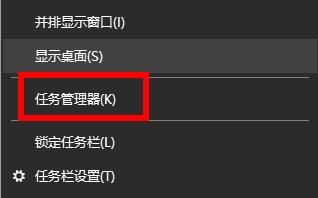 Backend Development
Backend Development PHP Tutorial
PHP Tutorial Complete explanation of PHP vulnerabilities (3)-Client script implantation
Complete explanation of PHP vulnerabilities (3)-Client script implantationClient-side script insertion (Script Insertion) refers to inserting executable scripts into objects such as forms, pictures, animations, or hyperlink text. When the user opens these objects, the script implanted by the attacker will be executed, and the attack will begin.
HTML tags that can be used as script implants generally include the following:
1. Page scripts such as javascript and vbscript marked by the <script> tag. You can specify the js program code in the <script> tag, or you can specify the URL path of the js file in the src attribute. 2. The object marked by the <object> tag. These objects are java applets, multimedia files, ActiveX controls, etc. Usually the URL path of the object is specified in the data attribute </script>
3. Object marked with
4. Object marked with
The attack steps of client-side script implantation
1. The attacker logs in to the website after registering as a normal user
2. Open the message page and insert the attack js code
3. Other users log in to the website (including administrators) and browse the content of this message
4. The js code hidden in the message content is executed, and the attack is successful
Instance Database
Database
CREATE TABLE `postmessage` (
`id` int(11) NOT NULL auto_increment,
`subject` varchar(60) NOT NULL default ”,
`name` varchar(40) NOT NULL default ”,
`email ` varchar(25) NOT NULL default ”,
`question` mediumtext NOT NULL,
`postdate` datetime NOT NULL default '0000-00-00 00:00:00′,
PRIMARY KEY (`id`)
) ENGINE=MyISAM DEFAULT CHARSET=gb2312 COMMENT='User's Message' AUTO_INCREMENT=69;
//add.php insert message
//list.php message list
//show.php display message
Submit the message below

Insert <script>while(1){windows.open();}</script> infinite pop-up box
Insert<script>location.href="http://www.php1.cn/"></script>
or use other self-constructed js code to attack
Prevention methods
Generally use the htmlspecialchars function to Convert special characters to HTML encoding
Function prototype
string htmlspecialchars (string string, int quote_style, string charset)
string is the string to be encoded
quote_style optional, the value can be ENT_COMPAT, ENT_QUOTES, ENT_NOQUOTES, default value ENT_COMPAT means converting only double quotes but not single quotes. ENT_QUOTES means converting both double quotes and single quotes. ENT_NOQUOTES, indicating that double quotes and single quotes will not be converted.
charset is optional, indicating the character set used. The
function will convert the following special characters into html encoding:
& —-> &
" —-> "
' —-> '
> —-> >
Change line 98 of show.php to
Then check the vulnerability page where js is inserted
The above is the complete solution of PHP vulnerabilities (3) - the content of client script implantation, For more related content, please pay attention to the PHP Chinese website (www.php.cn)!
![VMware Horizon Client无法打开[修复]](https://img.php.cn/upload/article/000/887/227/170835607042441.jpg) VMware Horizon Client无法打开[修复]Feb 19, 2024 pm 11:21 PM
VMware Horizon Client无法打开[修复]Feb 19, 2024 pm 11:21 PMVMwareHorizon客户端可帮助您便捷地访问虚拟桌面。然而,有时虚拟桌面基础设施可能会遇到启动问题。本文将讨论当VMwareHorizon客户端未能成功启动时,您可以采取的解决方法。为什么我的VMwareHorizon客户端无法打开?在配置VDI时,如果未打开VMWareHorizon客户端,可能会出现错误。请确认您的IT管理员提供了正确的URL和凭据。如果一切正常,请按照本指南中提到的解决方案解决问题。修复未打开的VMWareHorizon客户端如果您的Windows计算机上未打开VMW
![VMware Horizon客户端在连接时冻结或停滞[修复]](https://img.php.cn/upload/article/000/887/227/170942987315391.jpg) VMware Horizon客户端在连接时冻结或停滞[修复]Mar 03, 2024 am 09:37 AM
VMware Horizon客户端在连接时冻结或停滞[修复]Mar 03, 2024 am 09:37 AM在使用VMWareHorizon客户端连接到VDI时,我们可能会遇到应用程序在身份验证过程中冻结或连接阻塞的情况。本文将探讨这个问题,并提供解决这种情况的方法。当VMWareHorizon客户端出现冻结或连接问题时,您可以采取一些措施来解决这一问题。修复VMWareHorizon客户端在连接时冻结或卡住如果VMWareHorizon客户端在Windows11/10上冻结或无法连接,请执行下面提到的解决方案:检查网络连接重新启动Horizon客户端检查Horizon服务器状态清除客户端缓存修复Ho
 PHP MQTT客户端开发指南Mar 27, 2024 am 09:21 AM
PHP MQTT客户端开发指南Mar 27, 2024 am 09:21 AMMQTT(MessageQueuingTelemetryTransport)是一种轻量级的消息传输协议,通常用于物联网设备之间的通信。PHP是一种常用的服务器端编程语言,可以用来开发MQTT客户端。本文将介绍如何使用PHP开发MQTT客户端,并包含以下内容:MQTT协议的基本概念PHPMQTT客户端库的选取和使用实例:使用PHPMQTT客户端发布和
 百度网盘网页无法启动客户端怎么解决?Mar 13, 2024 pm 05:00 PM
百度网盘网页无法启动客户端怎么解决?Mar 13, 2024 pm 05:00 PM很多朋友下载文件会先在网页上浏览,然后转入客户端下载。但有时用户会遇到百度网盘网页无法启动客户端的问题。针对这个问题,小编为大家准备了百度网盘网页无法启动客户端的解决办法,有需要的小伙伴可以参考一下哦。 解决办法 1、可能百度网盘不是最新版,手动打开百度网盘客户端,点击右上角的设置按钮,再点击版本升级。 如无更新,则会有如下提示,若有更新,请按照提示进行更新。 2、可能禁用了百度网盘的检测服务程序 有可能使我们自己手动或者使用安全软件自动禁用了百度网盘的检测服务程序。 请查看一下
 手机客户端是什么Aug 16, 2023 pm 01:40 PM
手机客户端是什么Aug 16, 2023 pm 01:40 PM手机客户端是指一种在智能手机上运行的应用程序,通过原生客户端或Web客户端的形式为用户提供各种功能和服务。手机客户端可以分为原客户端和Web客户端两种形式,原生客户端是指使用特定编程语言和开发工具,为特定的操作系统编写的应用程序,Web客户端的优势在于跨平台兼容性好,可以不受操作系统限制在不同设备上运行,但相对于原生客户端,Web客户端的性能和用户体验可能有所降低。
 如何在PHP中编写FTP客户端Aug 01, 2023 pm 07:23 PM
如何在PHP中编写FTP客户端Aug 01, 2023 pm 07:23 PM如何在PHP中编写FTP客户端一、引言FTP(文件传输协议)是一种用于在网络上进行文件传输的协议。在Web开发中,我们常常需要通过FTP来上传或下载文件。PHP作为一种流行的服务器端语言,提供了强大的FTP功能,使我们可以方便地编写FTP客户端。本文将介绍如何使用PHP编写一个简单的FTP客户端,并提供代码示例。二、连接FTP服务器在PHP中,我们可以使用f
 如何移除Win11客户端上方的盾牌标志?Jan 05, 2024 am 11:21 AM
如何移除Win11客户端上方的盾牌标志?Jan 05, 2024 am 11:21 AM部分Win11使用者察觉他们的个人电脑中出现了一些软件图标旁边出现防盾标志的现象。通过此举保障计算机系统乃至其中存储的重要信息和资料免受侵害。如果你不喜欢的话,那么可以通过下面的方法来解决。win11客户端上面的盾牌标志怎么去除1、右键电脑上的任务栏,然后选择“任务管理器”2、再点击上面的“启动”3、在这里找到“Windowsdefender”然后右键选择“禁止”,然后重启电脑就可以了。
 win11客户端和服务器不支持常用的sslDec 29, 2023 pm 02:09 PM
win11客户端和服务器不支持常用的sslDec 29, 2023 pm 02:09 PM如果客户端与服务器均未实现SSL加密技术,极易造成信息在传播过程中遭受中间攻击者的窃取,从而引发严重危害数据安全之隐患。为此,应紧急采取相应措施以有效保障敏感数据安全,可以参考下面的方法来进行操作。win11客户端和服务器不支持常用的ssl1、对服务器系统进行升级改造可以优先考虑对服务器系统进行升级与优化,或者补充所需的必要组件,以确保其能够顺利地支持最新的SSL协议。2、部署SSL证书您可以选购以及部署那些享有盛誉的认证中心发布的SSL证书,将其安装于服务器内即可实现此功能。3、开启SSL协议


Hot AI Tools

Undresser.AI Undress
AI-powered app for creating realistic nude photos

AI Clothes Remover
Online AI tool for removing clothes from photos.

Undress AI Tool
Undress images for free

Clothoff.io
AI clothes remover

AI Hentai Generator
Generate AI Hentai for free.

Hot Article

Hot Tools

Safe Exam Browser
Safe Exam Browser is a secure browser environment for taking online exams securely. This software turns any computer into a secure workstation. It controls access to any utility and prevents students from using unauthorized resources.

SecLists
SecLists is the ultimate security tester's companion. It is a collection of various types of lists that are frequently used during security assessments, all in one place. SecLists helps make security testing more efficient and productive by conveniently providing all the lists a security tester might need. List types include usernames, passwords, URLs, fuzzing payloads, sensitive data patterns, web shells, and more. The tester can simply pull this repository onto a new test machine and he will have access to every type of list he needs.

SublimeText3 Mac version
God-level code editing software (SublimeText3)

ZendStudio 13.5.1 Mac
Powerful PHP integrated development environment

SublimeText3 English version
Recommended: Win version, supports code prompts!





